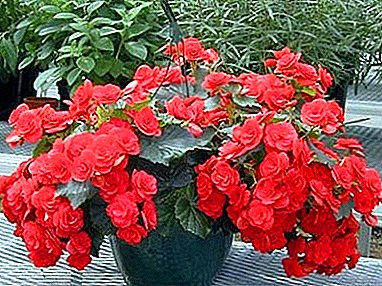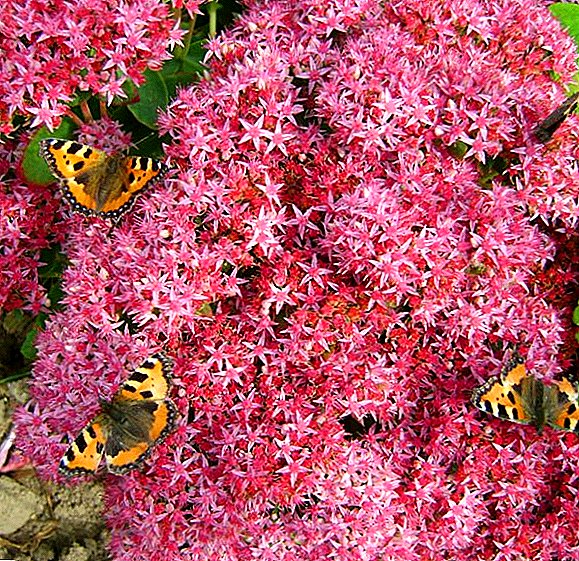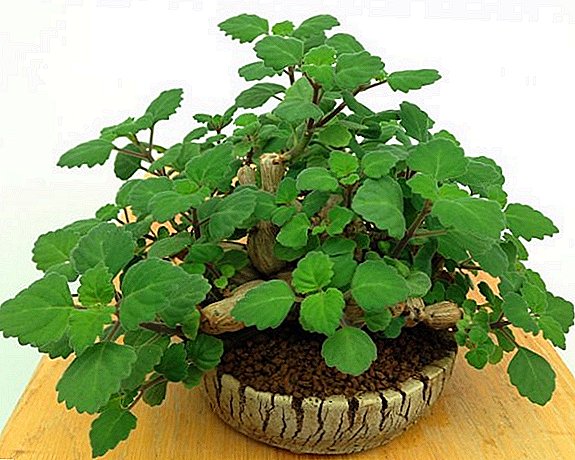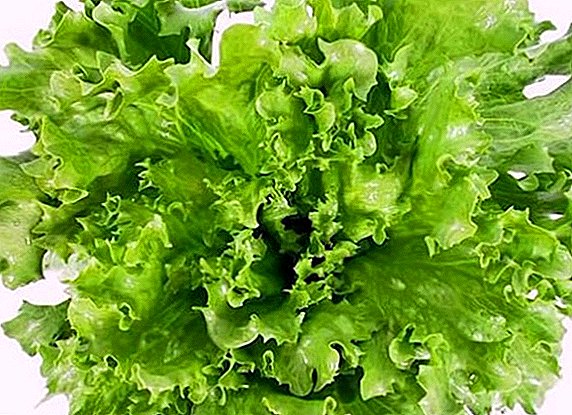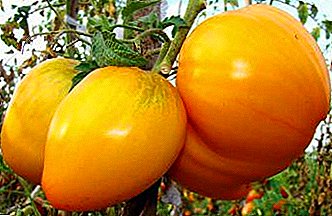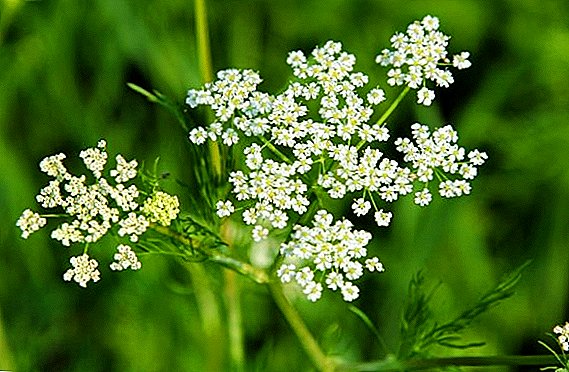 To improve the taste and give a pleasant aroma to various dishes, since ancient times people have thought of putting seasonings in them. One of the most ancient spices is cumin.
To improve the taste and give a pleasant aroma to various dishes, since ancient times people have thought of putting seasonings in them. One of the most ancient spices is cumin.
Cumin ordinary and its properties
The structure of fragrant spices includes fruits-visloplodnik plants under the same name. They are cleaned in early autumn. After harvesting, seeds are taken and dried. They have a spicy taste with notes of sharpness and bitterness.
Botanical description
The caraway plant is a biennial assigned to the umbrella family. The Latin designation of the plant sounds like Cárum cárvi.  1 - a plant with flowers and fruits, 2 - a root, 3 - radical leaves, 4 - a flower, 5 - a pistil, 6 - a fruit (visloplodnik), 7 - a fruit in cross section
1 - a plant with flowers and fruits, 2 - a root, 3 - radical leaves, 4 - a flower, 5 - a pistil, 6 - a fruit (visloplodnik), 7 - a fruit in cross section
You can learn this herbaceous plant by a straight single smooth stem 30-80 cm high, spindle root, oblong, dissected leaves of ovate-lanceolate form, inflorescences at the end of twigs in the form of umbrellas 4-8 cm in diameter with small white flowers. Brown visopod fruits have a length of 3 mm and a width of 2.5 mm.
In natural conditions, the plant prefers to grow on the forest edges, in meadows, near people's dwellings as a weed. Distribution area in the wild - Europe, Asian regions with a temperate climate, subtropics of India, Pakistan, the Caucasus, Western and Eastern Siberia, the Far East.
Did you know? People knew about the beneficial and harmful effects of caraway seeds on the body 3 thousand years ago. It is known that they were added to food as a seasoning, used to prepare healing agents, love potions, filling of protective amulets.
What types of cumin are there?
Botanists are aware of the existence of 30 species of plants, including wild and cultivated. Some of them have a decorative purpose. As a spice use 2 types: ordinary and black. The latter grows to 30-50 cm. Forms seeds of a triangular shape, which have a sharp, spicy taste with a nutmeg note. It has 2 varieties: true black and Turkish black. The fruits of this plant are added to pickles, pickling, baking.
What group of spices does it belong to?
Those who are interested in a variety of spices, it will be interesting to know to which group of spices cumin belongs.  According to the method of use, it is included in the group of spicy herbs, where fruits are used as seasoning. This group also includes anise, vanilla, cardamom, coriander, pepper.
According to the method of use, it is included in the group of spicy herbs, where fruits are used as seasoning. This group also includes anise, vanilla, cardamom, coriander, pepper.
It will be useful for you to read about the healing properties and contraindications to the use of cumin seeds.
Chemical composition of seasoning
In the caraway fruits, essential and fatty oils, flavonoids, coumarins, protein and tannins are distinguished. They are rich in vitamins A, groups B, C, D, H, E, K, minerals: calcium, potassium, sodium, magnesium, phosphorus, sulfur, iron, sulfur, copper.

Medicinal properties and benefits of cumin
Since caraway fruits have a rich vitamin-mineral and amino acid composition, they have the following useful properties:
- tonic;
- antioxidant;
- urinary and choleretic;
- sedatives;
- painkillers;
- carminative;
- laxative;
- bactericidal.
Read more about the beneficial properties and application of cumin.
Due to the listed properties, the spice can have the following therapeutic effects on the human body:
- increase protective forces against disease;
- elimination of pain;
- calming the nervous system;
- normalization of digestion;
- improvement of vascular condition;
- normalization of blood pressure;
- acceleration of metabolism;
- sleep normalization;
- improvement of the skin, hair, nail plates;
- brain stimulation;
- blood circulation improvement;
- breath freshening;
- restoration of hormonal balance;
- body cleansing;
- getting rid of worms;
- improved lactation;
- kidney cleansing;
- sputum excretion;
- elimination of colic;
- weight loss.

Cumin application
Today, cumin seeds are a popular seasoning in the kitchens of many nations. Also, their healing properties are used in medicine and cosmetology.
In folk medicine
Cumin has been used in official medicine in many European countries and in the USA.
In our latitudes, it is used to prepare traditional medicine to get rid of such problems as:
- excess weight;
- worm infestation;
- digestive disorders;
- small amount of milk during lactation;
- flatulence;
- colic;
- cough;
- nephritis, cystitis;
- hormonal disruptions;
- arthritis;
- liver disease;
- menstrual pains;
- cold.
Important! A healthy adult can consume up to 25 g (4-5 tsp) of cumin a day. Children over 6 years old are allowed up to 10 g per day (2 tsp). Exceeding the norms may cause harm to the body and cause negative reactions.
Application in cosmetology
Spice has a positive effect on the condition of the skin, hair and nails. A decoction of it is advised to use for washing and wiping, to get rid of such problems as:
- greasy luster;
- enlarged pores;
- inflammation;
- acne
Hair rinsed with a decoction to remove oily seborrhea and strengthen them.
Also, the seeds are added to the scrubs to more effectively fight cellulite. 
In cooking
Cumin ordinary is recommended to be added to such dishes:
- salads;
- first meal;
- side dishes;
- baking;
- the drinks;
- pickles;
- fermented foods.
We also recommend reading about the effect of cumin on the stomach and intestines.
How to add to dishes?
To enhance the flavor and taste of seasoning, to reveal all the notes in full, we recommend using the recommendations of experienced chefs:
- Warm up the pan in the pan without adding oil before placing it in the dish. Heat will allow to start the process of extracting essential oils.
- Seeds can be ground to a state of powder and put into the dish as salt.
- To save valuable items, you must add spice 15 minutes before removing the dish from the stove.

What is the combination of seasoning cumin?
Seeds are mixed into dishes along with such herbs and vegetables as:
- coriander;
- cardamom;
- cinnamon;
- carnation;
- pepper;
- zira;
- saffron;
- turmeric;
- garlic;
- bow;
- dill.
An interesting taste is obtained by mixing the spice with ginger, bay leaf, basil. Cumin is one of the ingredients in the mixtures "Curry", "Garam Masala".
How to choose a spice right?
In order for the spice to bring only benefit, and the dish has a pleasant taste and aroma, it is necessary that it be of high quality.
Important! The darker the color of cumin, the higher its quality and the more essential oils in it.
Here are some guidelines for choosing a spice for a purchase:
- It has a pleasant smell.
- Painted in a uniform color.
- Without admixture of moldy seeds.
Spice is sold in whole or ground form. Preference should be given to the first option, because in this form the spice is better stored.
What is the difference between cumin and cumin?
Because of the close resemblance to other plants, confusion often arises, and cumin is taken for other seasonings, such as cumin or cumin. Although they differ in taste. The concept of mixing is due to the fact that these are fruits of plants that belong to the same family, because of the external similarity of seeds, and also because of the many names given to them by different peoples. Here's how, for example, is often called Zira - Indian, Coptic cumin, jira, azhgon. Kumin is called Iranian, Roman, Egyptian spicy cumin, cmin, cumin.
Video: What is the difference between cumin and cumin
There is a second name for cumin ordinary - anise field. In the people it is also called mines, cumin, kimin, goat, ganus.
About what constitutes cmin, and as used in cooking, as described above. Cumin has a more delicate flavor than cumin. Its scope of application is confectionery, sausage, cheese production, beverage production. This spice is combined with rice, legumes, vegetables.
Zira less than cumin. Her smell is stronger, and the taste is hot. Most often it is added to meat dishes, especially those prepared on the grill, as well as in pilaf.
Read also what is the difference between cumin and dill.
How to grow and collect cumin?
Growing cumin is easy. He does not take much time and effort to care. The pledge of a good harvest is planting in fertile soil, on a well-lit garden, at optimal times, carrying out regular watering, fertilizing, loosening and weeding.
The plant can be grown in spring or before winter. Planting is carried out by sowing seeds seedlessly. Watering culture needs infrequent. It is imperative that moistening is necessary during stitching and at the beginning of the release of buds. Fertilization is carried out 2-3 times per season, using complex mineral fertilizers.

Harvesting is done in July. It is important not to be late with him, because the seeds are quickly showered. It is necessary to start harvesting as soon as the fruits have turned brown.
During harvesting, the plants are completely removed from the soil, tied up in bunches and hung under a canopy, beforehand spreading fabric or film for falling seeds.
Contraindications and harm to cumin for the body
Caraway seasoning should not be consumed:
- during pregnancy;
- under the age of 6 years;
- with gastritis with high acidity, diabetes, kidney stones and gall, thrombophlebitis, coronary disease;
- with individual intolerance;
- in case of post-infarction, organ transplantation.
Did you know? The benefit of cumin was described in his writings by the ancient healers Hippocrates, Dioscorides, Avicenna. The last figure advised him to use to overcome fatigue and overwork.
Cumin is an ancient seasoning with a unique chemical composition that has a number of therapeutic effects on humans. It is used not only to prepare delicious dishes, but also to maintain the beauty of the face, body, eliminate cosmetic problems and cure diseases. Benefit of seasoning brings only when used in moderate doses.




